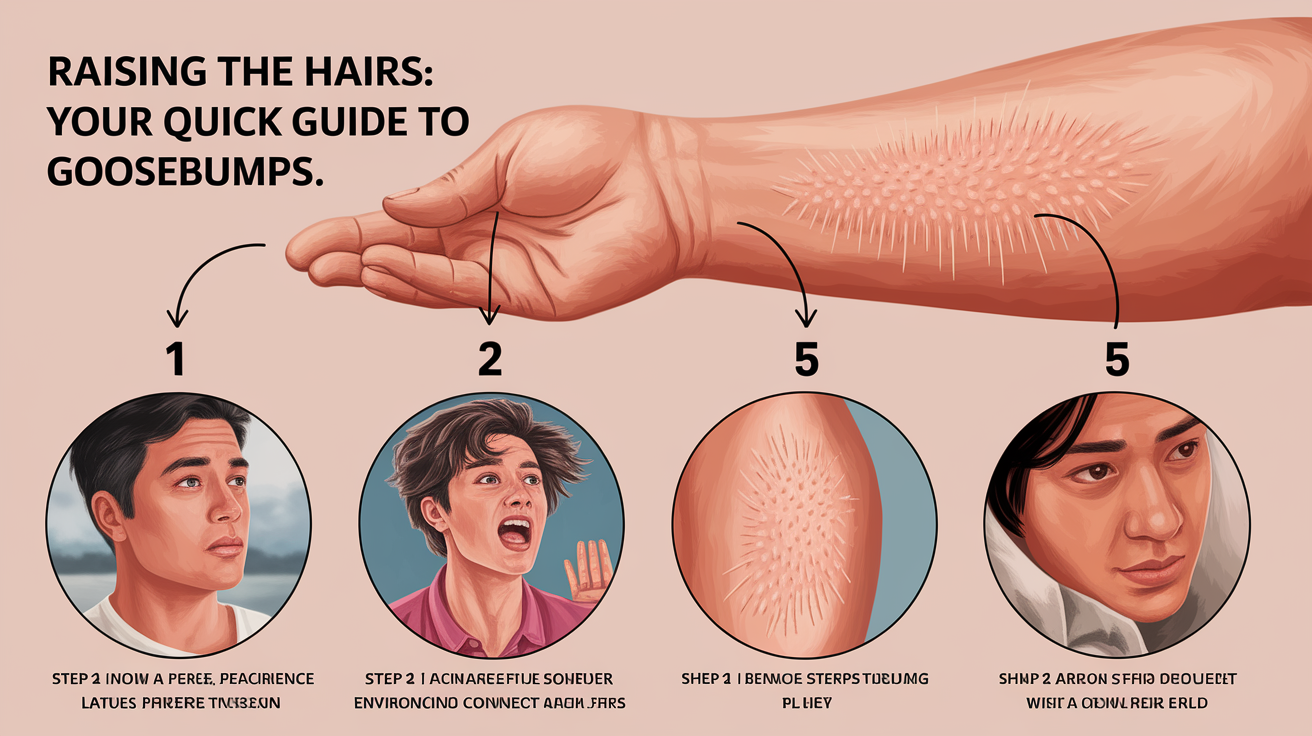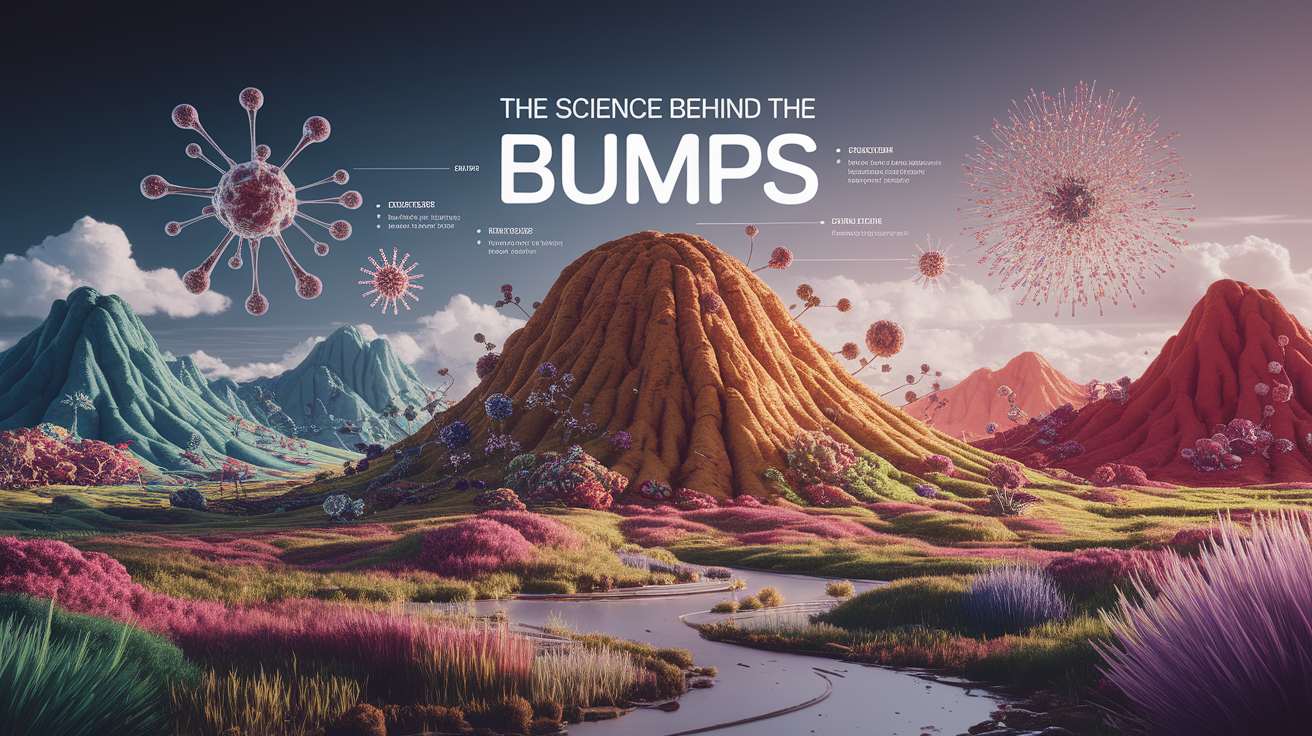Quick Answer: Goosebumps are a temporary skin condition where small bumps appear at the base of your body hairs. They are caused by the contraction of tiny muscles attached to each hair follicle and are typically triggered by cold temperatures, strong emotions like fear or awe, or hormonal changes.
Raising the Hairs: Your Quick Guide to Goosebumps
Have you ever felt a sudden chill, listened to a breathtaking piece of music, or watched a scary movie and noticed little bumps popping up on your arms? That peculiar, prickling sensation is universally known as goosebumps. The name comes from the resemblance to the skin of a plucked goose, but science has a few other names for it, including piloerection, cutis anserina, and horripilation. These fancy terms describe a fascinating, involuntary reaction that is a holdover from our ancient ancestors.

While we often associate them with spooky tales or a sudden draft, goosebumps are a window into our body’s automatic response system. They are a physical sign that our nervous system has been activated by something in our environment, whether it’s a real threat, a perceived one, or even a moment of profound beauty. Let’s peel back the layers and understand the science behind these curious bumps.
The Science Behind the Bumps
At the heart of every goosebump is a tiny, involuntary muscle called the arrector pili. Each of these minuscule muscles connects a hair follicle to your skin. When your body decides it’s time to activate them, these muscles contract, pulling the hair follicle and causing the attached hair to stand straight up. This action is what creates the visible bump on your skin.

This entire process is an automatic reflex, meaning you have no conscious control over it. Like the innate righting reflex in cats that allows them to land on their feet, goosebumps are an ancient, hardwired mechanism. This response is coordinated by the sympathetic nervous system, which is a part of the larger Autonomic Nervous System responsible for our “fight or flight” reactions. When this system is triggered, it releases a stress hormone called adrenaline, which sends a signal to the arrector pili muscles to tense up, leading to the familiar bumpy texture on your skin.
Common Triggers of Goosebumps
So, what exactly flips the switch on this “fight or flight” response to give us goosebumps? The triggers are surprisingly varied, ranging from the physical to the deeply emotional.

Keeping Warm in the Cold
The most common trigger is exposure to cold temperatures. For our furry ancestors, having their hair stand on end would have trapped a layer of air close to the skin, creating an insulating barrier against the cold. While humans don’t have enough body hair for this to be effective anymore, the reflex remains. Your body is essentially trying to fluff up a coat it no longer has. This is similar to how certain substances can create a perceived sensation of cold, tricking your sensory receptors even without an actual drop in temperature.
A Rollercoaster of Emotions
Strong emotions are another powerful trigger for goosebumps. This is where the reaction gets truly interesting and connects to our culture and psychology.
- Fear and Awe: Watching a thriller or one of the classic scary stories from the beloved Goosebumps book series by R.L. Stine is a perfect example. These frightening stories and creepy characters are designed to provoke a strong emotional response. For our ancestors, making their hair stand on end would have made them appear larger and more intimidating to predators. Today, we get the same physiological reaction when Slappy the Dummy pops up in a film adaptation.
- Pleasure and Inspiration: Goosebumps aren’t just for spooky tales. They can also appear during moments of intense beauty, pride, or nostalgia. Hearing a powerful symphony, watching an athlete achieve a great feat, or reminiscing about a cherished memory can all trigger the response. This is sometimes called “frisson” or a “skin orgasm” and is often accompanied by the release of feel-good hormones like dopamine. The complex neurological processing involved in these emotional highs is what gives us that shiver down our spine.
When to Pay Attention
For the vast majority of people, goosebumps are a completely normal and harmless physiological response. They appear for a few moments and then fade away as the trigger subsides. However, in very rare cases, persistent or unusual goosebumps could signal an underlying issue.

If you experience goosebumps constantly, without any apparent trigger, or if they appear on only one side of your body, it might be worth mentioning to a healthcare provider. Certain conditions, such as autonomic dysreflexia, temporal lobe epilepsy, or other neurological disorders, can sometimes present with abnormal piloerection. In some individuals with multiple sclerosis (MS), goosebumps can be associated with nerve damage, though this is not a common or defining symptom of the disease. The key is to pay attention to what is unusual for your own body and seek advice if you have concerns.
Smoothing It Out: Key Takeaways on Goosebumps
Goosebumps are more than just a weird skin thing; they are a fascinating glimpse into our evolutionary past and our complex nervous system. They remind us that our bodies are constantly reacting to the world around us in ways we don’t even have to think about.
- They are an involuntary reflex: Tiny muscles called arrector pili contract, causing your hair to stand on end.
- The main triggers are cold and strong emotions: Your body tries to keep warm or reacts to fear, awe, and excitement.
- It’s an evolutionary leftover: The response was more useful for our hairier ancestors for insulation and intimidation.
- They are usually harmless: Goosebumps are a normal part of being human, but persistent or unusual occurrences should be discussed with a doctor.













